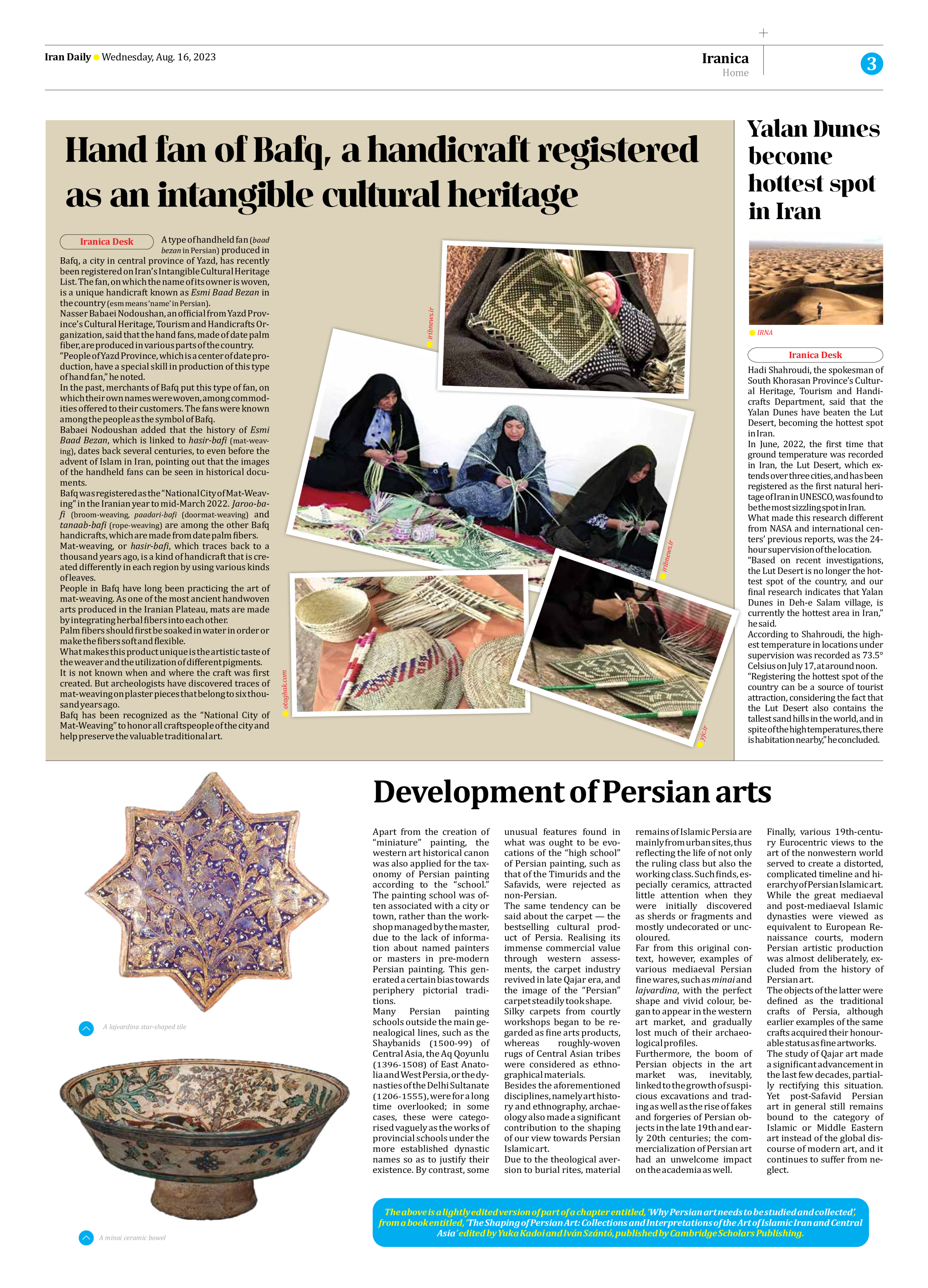
Development of Persian arts
Apart from the creation of “miniature” painting, the western art historical canon was also applied for the taxonomy of Persian painting according to the “school.” The painting school was often associated with a city or town, rather than the workshop managed by the master, due to the lack of information about named painters or masters in pre-modern Persian painting. This generated a certain bias towards periphery pictorial traditions.
Many Persian painting schools outside the main genealogical lines, such as the Shaybanids (1500-99) of Central Asia, the Aq Qoyunlu (1396-1508) of East Anatolia and West Persia, or the dynasties of the Delhi Sultanate (1206-1555), were for a long time overlooked; in some cases, these were categorised vaguely as the works of provincial schools under the more established dynastic names so as to justify their existence. By contrast, some unusual features found in what was ought to be evocations of the “high school” of Persian painting, such as that of the Timurids and the Safavids, were rejected as non-Persian.
The same tendency can be said about the carpet — the bestselling cultural product of Persia. Realising its immense commercial value through western assessments, the carpet industry revived in late Qajar era, and the image of the “Persian” carpet steadily took shape.
Silky carpets from courtly workshops began to be regarded as fine arts products, whereas roughly-woven rugs of Central Asian tribes were considered as ethnographical materials.
Besides the aforementioned disciplines, namely art history and ethnography, archaeology also made a significant contribution to the shaping of our view towards Persian Islamic art.
Due to the theological aversion to burial rites, material remains of Islamic Persia are mainly from urban sites, thus reflecting the life of not only the ruling class but also the working class. Such finds, especially ceramics, attracted little attention when they were initially discovered as sherds or fragments and mostly undecorated or uncoloured.
Far from this original context, however, examples of various mediaeval Persian fine wares, such as minai and lajvardina, with the perfect shape and vivid colour, began to appear in the western art market, and gradually lost much of their archaeological profiles.
Furthermore, the boom of Persian objects in the art market was, inevitably, linked to the growth of suspicious excavations and trading as well as the rise of fakes and forgeries of Persian objects in the late 19th and early 20th centuries; the commercialization of Persian art had an unwelcome impact on the academia as well.
Finally, various 19th-century Eurocentric views to the art of the nonwestern world served to create a distorted, complicated timeline and hierarchy of Persian Islamic art.
While the great mediaeval and post-mediaeval Islamic dynasties were viewed as equivalent to European Renaissance courts, modern Persian artistic production was almost deliberately, excluded from the history of Persian art.
The objects of the latter were defined as the traditional crafts of Persia, although earlier examples of the same crafts acquired their honourable status as fine artworks.
The study of Qajar art made a significant advancement in the last few decades, partially rectifying this situation. Yet post-Safavid Persian art in general still remains bound to the category of Islamic or Middle Eastern art instead of the global discourse of modern art, and it continues to suffer from neglect.
The above is a lightly edited version of part of a chapter entitled, ‘Why Persian art needs to be studied and collected’, from a book entitled, ‘The Shaping of Persian Art: Collections and Interpretations of the Art of Islamic Iran and Central Asia’ edited by Yuka Kadoi and Iván Szántó, published by Cambridge Scholars Publishing.







